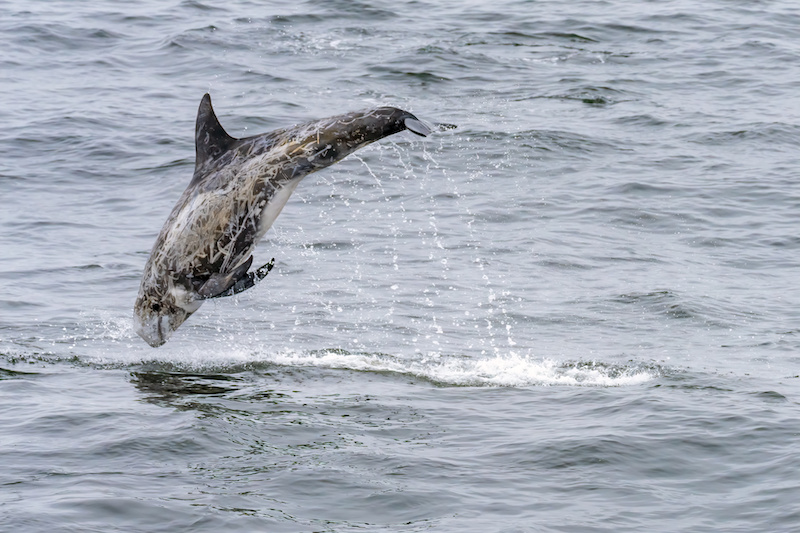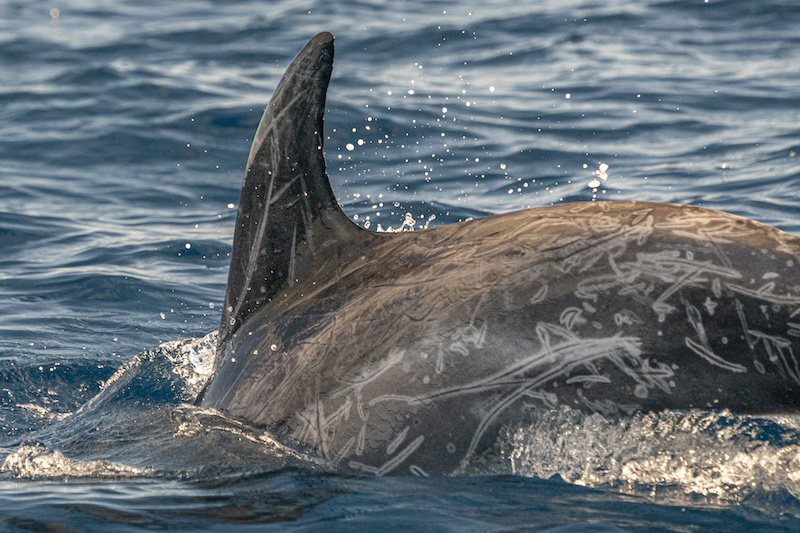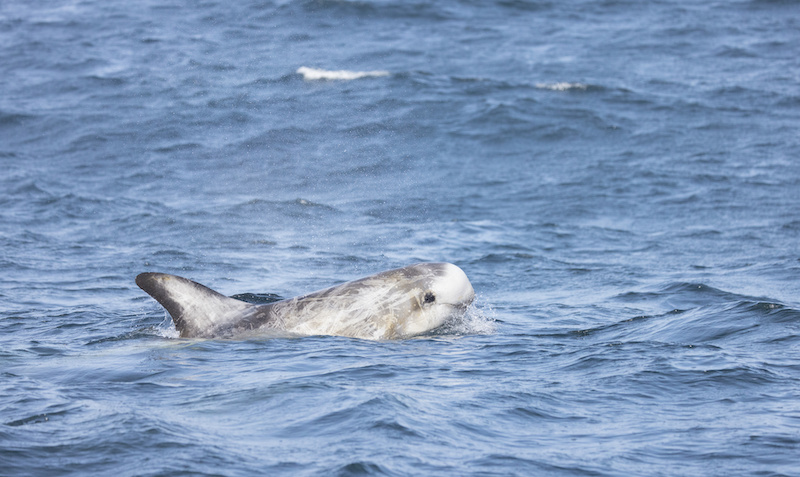
Risso’s Dolphin, a mysterious marine creature, captures the attention of underwater life enthusiasts. This article delves deep into the fascinating aspects of this species, from its unique taxonomy to its distinctive dietary habits. Discover the secrets of its habitat, reproductive habits, and the characteristics that make it so special in the Caribbean waters.
Characteristics of Risso’s Dolphin
The Risso’s Dolphin, scientifically known as Grampus griseus, is a remarkable species within the Delphinidae family. Discovered by Georges Cuvier in 1812, this marine mammal is distinguished by several unique physical and behavioral traits. As an adult, it measures between 2.60 and 3.5 meters in length and weighs between 250 and 400 kg, with a lifespan of around 40 years. What makes it particularly distinctive is its skin, which bears numerous scars from social interactions and fishing battles. These scars accumulate with age, making some individuals almost entirely white.
The Risso’s Dolphin lacks a visible rostrum, a rare feature among cetaceans. It has a globular head with a prominent melon and a large falcate dorsal fin, which can sometimes be mistaken for that of an orca. Males and females exhibit differences in coloration, with females generally being lighter. The young are born with darker skin, which lightens and becomes covered in scars over time.
In terms of behavior, the Risso’s Dolphin is known for its shy nature and tendency to avoid boats. It forms groups of 3 to 30 individuals, and sometimes hundreds in certain geographic areas. The structure of these groups varies, but some alliances between individuals can be very loyal and long-lasting. The Risso’s Dolphin is also a cousin to false killer whales and pilot whales, sharing with them certain physical and behavioral characteristics.

Habitat of Risso’s Dolphin
The Risso’s Dolphin, Grampus griseus, primarily inhabits the deep and open waters of temperate, subtropical, and tropical oceans. This pelagic species prefers depths ranging between 400 and 1,000 meters. Its habitat is characterized by vast and deep waters, providing a rich food environment conducive to its hunting habits.
The Risso’s Dolphin is also known for its seasonal migrations, moving to colder waters in summer and returning to warmer regions in winter, following variations in water temperature. Although it is a high-sea species, the Risso’s Dolphin is sometimes observed near coasts, especially **around islands and in areas where deep waters are accessible** close to the shoreline. This adaptability to different marine environments underscores the resilience and survival capabilities of this fascinating species.
Reproduction in Risso’s Dolphin
The reproduction of Risso’s Dolphin, Grampus griseus, exhibits unique characteristics within the Delphinidae family. Females reach their sexual maturity between 10 and 13 years, while males may take a bit longer. The gestation period is relatively long, lasting around 14 months. After gestation, the female gives birth to a single calf, measuring approximately 1.40 meters and weighing around 20 kg at birth.
Young Risso’s Dolphins are nursed and remain dependent on their mother for about 1.5 to 2 years, a crucial period for their development and learning the skills necessary for survival in the marine environment. The interval between births is generally 2 to 4 years, allowing the mother to dedicate enough time and resources to the care of each offspring. This reproductive strategy, with relatively long intervals between births, contributes to maintaining the population of this species while ensuring quality attention and care for the offspring.

Diet of Risso’s Dolphin (Grampus griseus)
Risso’s Dolphin, Grampus griseus, has a specific diet that sets it apart within the Delphinidae family. This species is primarily teuthophagous, meaning it primarily feeds on squid. This preference for squid indicates an adaptation to deep-sea hunting, where these cephalopods are abundant. In addition to squid, Risso’s Dolphin also consumes other mollusks, as well as fish, crustaceans, and krill.
The ability of Risso’s Dolphin to dive to considerable depths, often between 400 and 1,000 meters, is essential for accessing its prey. This feeding habit underscores the importance of deep-sea zones for the survival of the species. The diet of Risso’s Dolphin plays a crucial role in balancing marine ecosystems, as it helps regulate the populations of its prey and maintains the overall health of the oceans.
Discover all cetacean species that can be found near the coasts of Martinique: